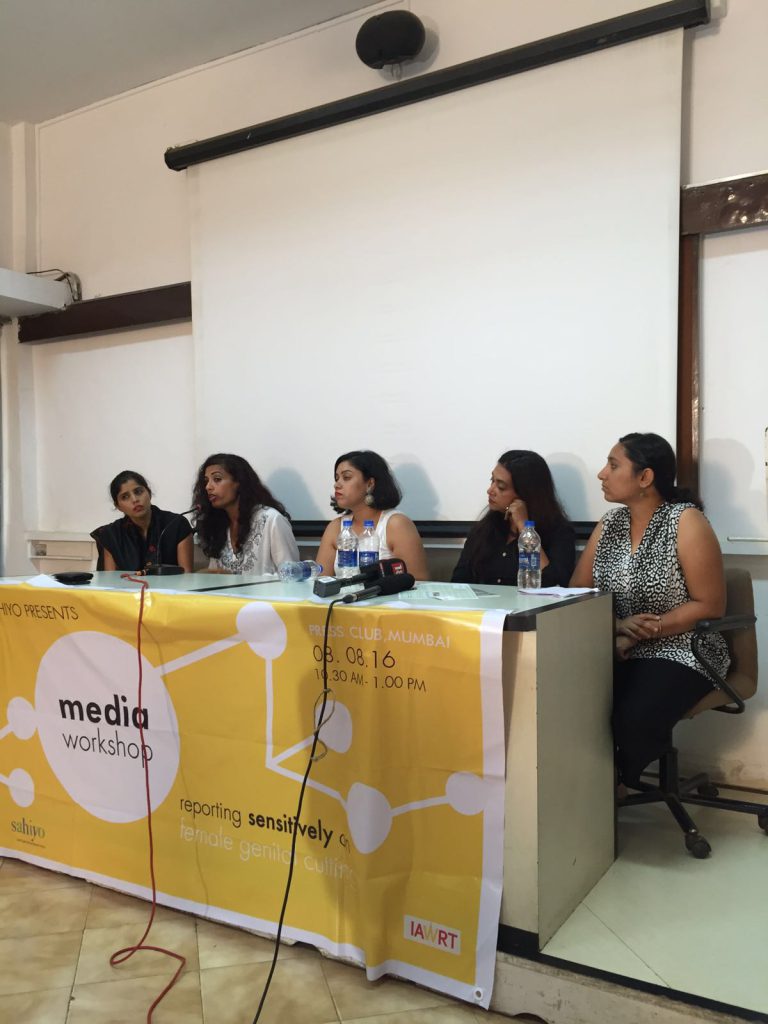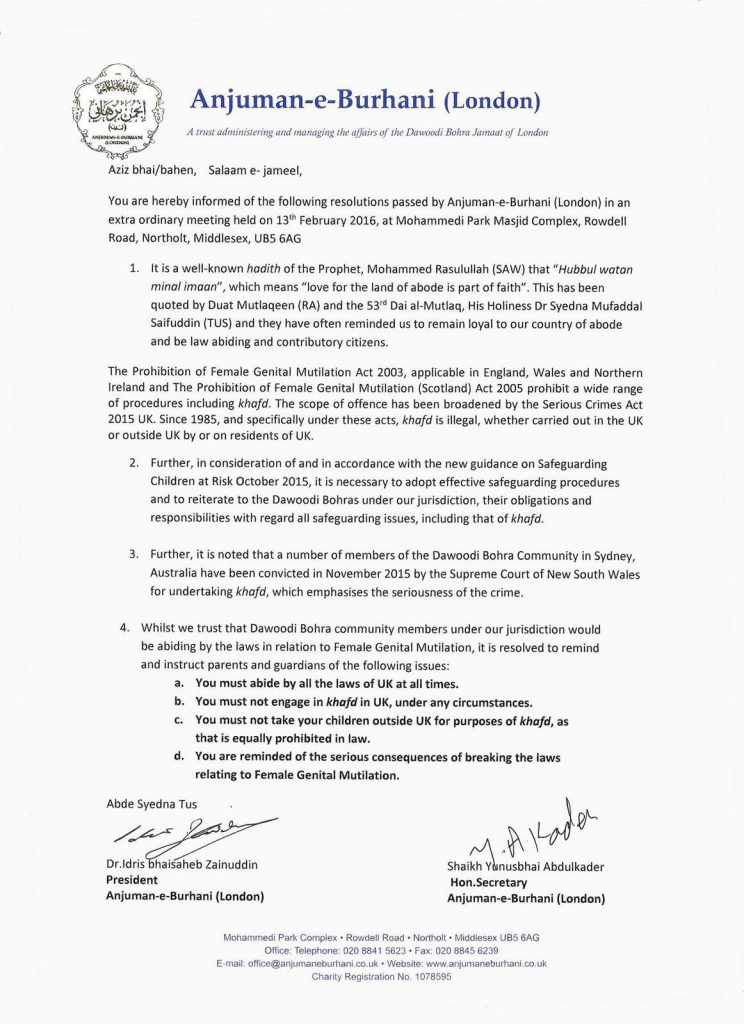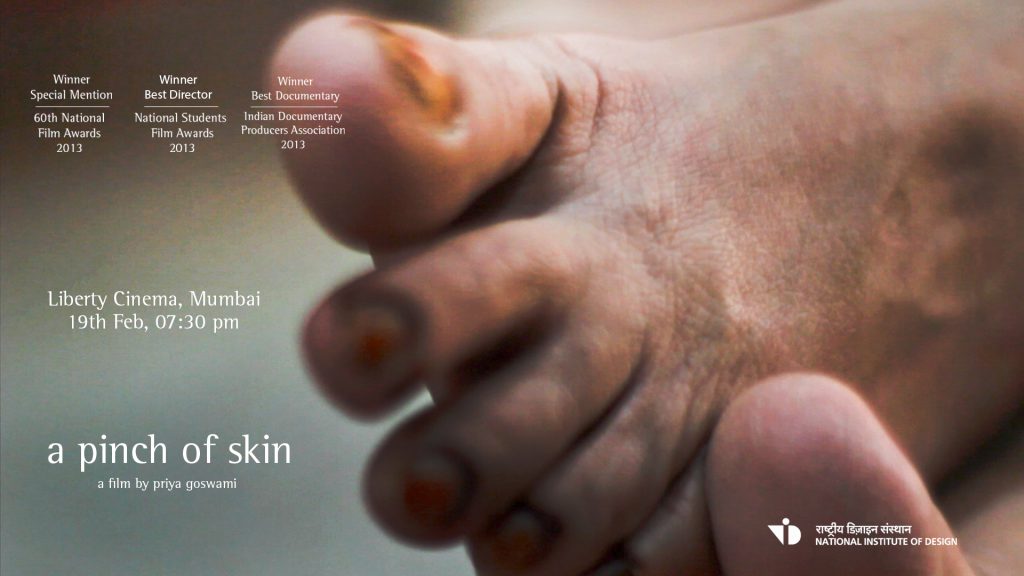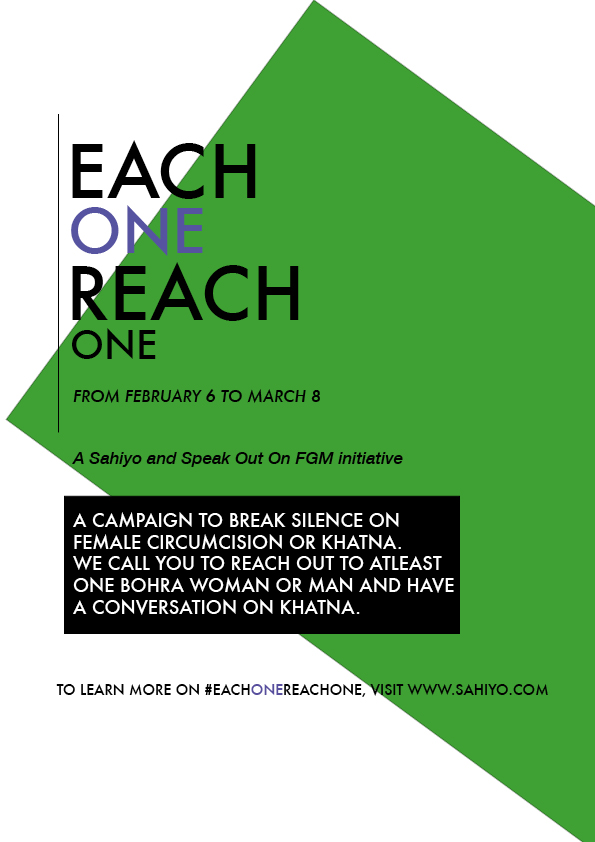Talking about Gender Justice at the Islamic Society of North America Annual Conference

On Sunday September 4th, Sahiyo’s cofounder, Mariya Taher, participated on a panel entitled, “Gender Justice: A Discussion with Policymakers, Religious Actors, and Activists” at the Islamic Society of North America (ISNA). The Secretary’s Office of Religion and Global Affairs at the U.S. Department of State partnered with Muslim community leaders and organizations to promote gender justice in issues ranging from calls for greater inclusion of women of faith in peace-building to advocating against gender-based violence, including female genital cutting. The panel brought together a diverse set of religious actors, policymakers, and civil society activists to address promoting gender justice within Muslim communities, both domestically and globally. The panel was moderated by Arsalan Suleman and the speakers included Maryum Saifee, Hind Makki, Mariya Taher, Reyhana Patel. Both Mariya and Reyhana addressed the topic of FGC and how their organizations are working towards shedding light on this form of gender violence, often misperceived as a practice rooted in religion. Mariya discussed Sahiyo’s storytelling platform that has crowdsourced testimonials from members of the Dawoodi Bohra community on FGC. Rehyana, from Islamic Relief Canada discussed her report on FGC in Indonesia. The panel also addressed the powerful work of women religious leaders in peace-building and humanitarian assistance. To learn about the “Gender Justice” panel, read more here on the U.S. Department of State Official Blog in a write-up by Maryum Saifee. And as Maryum writes: Panel discussions like the one at ISNA are important platforms. They highlight both the structural challenges and limitations Muslim women continue to face, but also show how they are on the frontlines promoting gender justice in their communities. To view a video of the panel discussion, click here.
A brief report on Sahiyo’s media workshop on khatna among Bohras

A 17-year-old girl passes away due to circumcision in Egypt

Is circumcision really as harmless as it is made out to be? We woke up to a sad news yesterday as a 17-year-old girl, Mayar Mohammad, died of severe bleeding caused by circumcision surgery in Suez, Egypt. The practice of female circumcision or any form of female genital cutting (FGC) has been banned in Egypt since 2007 and this procedure was carried out illegally on Mayar in a private hospital. Earlier in Egypt, a doctor’s license was revoked for killing a 13-year-old who died of similar circumstances due to a circumcision surgery. Even then the practice continues to exist, shifting more and more towards medical professionals carrying out FGC illegally. While many people quip about the differences between circumcision and female genital cutting, these instances are a reminder of what the procedure could also lead to. A poignant reminder that circumcision within the Dawoodi Bohra community, too, is seen as a cultural imperative and that these days the practice is increasingly shifting to gynecologists who belong to the Bohra community and who believe that there is no harm in carrying it out on young girls. “Often the practice of Khatna, Khafd or Sunnat is brushed away, stating circumcision (which also falls under the category of Type 1 FGC) to be incomparable with more severe forms of Female Genital Cutting commonly known to be practiced in Africa, although some African countries practice less severe forms too, depending on the ethnic tribe involved.” The community in Egypt is known to practice circumcision and not other severe forms of mutilation, but it is hard to say what must have been the extent of cut due to which Mayar lost her life. This also holds true with Khatna among the Dawoodi Bohras. Even though it is believed to be a small nick or cut, who can claim that the procedure might not lead to severe hemorrhaging? Or because of the child’s writhing one might cut off more than necessary by accident? As Sahiyo, we feel extremely sad to hear about this development and want our audience to ask themselves the following questions: Can one be absolutely certain that while Khatna is performed, more than the supposed required amount of skin doesn’t get cut off by design or by default? Just because some communities have begun to medicalize the practice, does that mean khatna holds ground scientifically, particularly when the World Health Organization has come out against all form of FGC? Is it okay to violate a girl’s rights to her body without her consent? This incident raises many more questions and we hope our readers will continue the dialogue on these issues, either by posting a comment or writing to us at info@sahiyo.com. Meanwhile, In a moving facebook post Mayar’s friend went on to blame the mother. “Mayar died due to ignorance and backwardness of her mother, who regarded her daughter as guilty only because she was created a female,” Rawan Al Jamal, classmate of the victim, mourned her in a Facebook post. Whether the mother is to be blamed or the doctor or the system which has made the practice mandatory; sadly Mayar no longer is alive. Read more about the incident here. Also read Daily Mail report here
A message from Sahiyo

Hello Sahiyo followers, friends, and supporters. We would like to take this opportunity to thank each and every one of you for coming out in such large numbers and taking forward our goal to end Khatna. We have recently received a lot of media participation in creating awareness and thanks to them, this issue is now garnering the attention of Bohras from all around the world. However, we would like to add that our media interviews are done with the sole intention of reaching out to the community members, and not as a publicity stunt or public relations exercise. As an organization, we try our best to convey to the media what the aims and goals are of Sahiyo. We as co-founders of Sahiyo, stand united against khatna. But our objective is to do this with the cooperation of our sisters without alienating or judging them. Sahiyo was, is, and will always be an organization that operates from knowledge, gathered within the community, and not merely on the basis of opinions or feelings harboured individually or as a group. With that said, our khatna online survey is still open to all Bohra women who are 18+ years of age – regardless of whether or not khatna has occurred to you or whether or not you agreed or disagree with the practice. So please feel free to fill it out the anonymous survey as we are on the last stages of compiling and analysing the data received. If you would like the link to the survey, please e-mail us at info@sahiyo.com.
A note about Sahiyo’s Online Survey

There have been a few media reports showcasing that ‘80% of Bohra women who took a survey on khatna were circumcised’. This statistic does come from Sahiyo’s online survey. However, we request that media representatives please first get in touch with Sahiyo before quoting or mentioning this statistic in any article, TV or radio interview. The statistic is a preliminary result and Sahiyo is concerned that this figure is being shared out of context from the rest of the online survey. A final report of the survey will be available in May 2016. For more information, please contact info@sahiyo.com.
After Australia, Bohras in London asked to stop practicing female circumcision

Come See A Pinch of Skin – A film by Priya Goswami

In 2012, Sahiyo Cofounder, Priya Goswami released the documentary, “A Pinch of Skin”, which has become a national award-winning documentary on female genital mutilation, in India. A Pinch Of Skin will be screening in Mumbai on 19th Feb at 7.30 PM at Liberty Cinemas. This screening is organised by Osianama (part of the Oisan’s Film Festival) and they are holding a month long screening on the theme of Womanhood.
Stop female circumcision, Dawoodi Bohra authorities tell community members in Australia

(Article originally posted in Scroll.in on Feb 11, 2016) By Aarefa Johari Three months after a group of Dawoodi Bohras was held guilty for female genital mutilation in a landmark verdict by an Australian court, community authorities have issued a notice to all Bohras in Australia asking them to obey the law of the land and stop the practice of khatna or female circumcision. The notice has drawn cheers from Bohra activists campaigning to bring an end to the ancient ritual of female genital mutilation that is meant to moderate a woman’s sexual urges. In November 2015, the Supreme Court of New South Wales found a Bohra mother, a retired nurse and a senior clergy member called Shabbir Vaziri guilty of carrying out genital cutting on two minor sisters between 2010 and 2012, when the girls were six and seven years old respectively. The three people could face a maximum penalty of seven years in prison. Hearings to determine the quantum of punishment began on February 5 and are expected to go on for a while. The Bohra ritual of khatna involves snipping off the tip of a young girl’s clitoris, which is defined by the World Health Organisation as Type I FGM. Even though female genital mutilation has been illegal in Australia since 1997, the Bohra case is the first to actually make it to the nation’s courtrooms. It is also the first instance of anyone being arrested for khatna in the Dawoodi Bohra Muslim community, whose members predominantly hail from Gujarat in India. The Bohras are the only community known to practice female genital cutting in India, and so far, many have continued to cut their girls even when they migrate to other countries where female genital mutilation is illegal. The notice issued to Australian community members on February 9, however, could significantly alter this trend. Obey the law of the land The notice, emailed to all Australian Bohras in the form a resolution letter, came a day after the Anjuman-e-Burhani (Sydney) – a trust managing Bohra affairs in Australia – held a meeting to discuss khatna. The letter begins by quoting a hadith (text comprising the teachings of Prophet Mohammed) which states that “love for the land of abode is part of faith”, making it part of Islamic tradition to “remain loyal to the country of abode and to be law abiding and contributory citizens”. The letter goes on to state: [blockquote]“Khafd (also known as khatna or female circumcision) has recently been interpreted by the Supreme Court of NSW to be within the meaning of Female Genital Mutilation (FGM) as defined in section 45 of the Crimes Act of NSW. It is likely that the practice will be interpreted to fall within the specific laws in relation to FGM in other states or territories of the Commonwealth of Australia. Consequently, khafd is illegal, whether it is carried out within any of the states of Australia or overseas. All parents and guardians are hereby directed in the strictest terms not to carry out khafd under any circumstances. You are further instructed not to take any person out of Australia for the purpose of khafd.”[/blockquote] If the community follows the instructions of this notice, it would mean that Bohra girls in Australia will henceforth escape a painful ritual that has been practiced in the community for centuries. It could also mean that Bohra authorities might issue similar notices in other countries where female genital mutilation is illegal, including the US, UK and Canada. No law in India yet The notice has come at a time when a judge presiding over the female genital mutilation case pointed out, during a sentencing hearing on February 5, that the convicted mother and retired nurse have not expressed any remorse about performing genital cutting on the girls. They have not, he said, made any statement indicating that they now reject the practice or would be willing to speak out against it in their community. The notice could also be seen as a reaction to the growing negative media attention to the practice of khatna among Bohras in the past year, as more and more women from the community have come forward to demand an end to the erstwhile secret ritual. In December, 17 Bohra women from around the world (disclosure: this reporter is among them) launched an online petition asking the Indian government to act against female genital cutting, which is not yet illegal in India. The petition has garnered more than 44,000 signatures so far. ‘A small victory’ Community members, particularly those in Australia, have welcomed the notice and are now eager to see the rest of the Bohra population around the world follow suit. Zarine Hashim, a hospital administrator from Melbourne, reacted to the notice with a mix of emotions. “I felt happiness and elation as it was a small victory in the whole scheme of things, but also anger that it has taken a court case to make this happen,” said Hashim. “I really feel that the community, worldwide, needs to take this as an example and reassess the legal, physical and mental health consequences of the practice before performing it.” To read the original article, click here.
Each One, Reach One – A FGC Public Outreach Campaign

